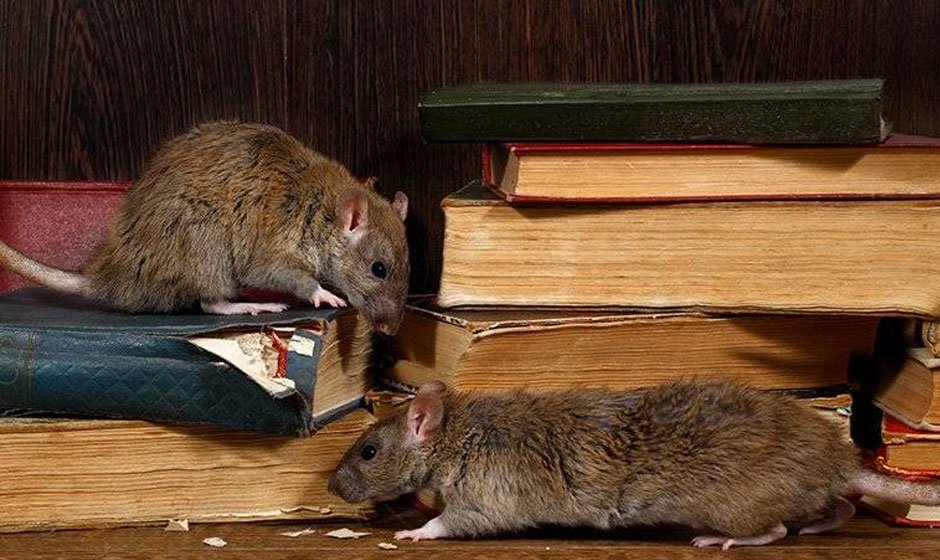Identifying Signs of Rodent Infestations

Rodent infestations can be a nightmare for homeowners, causing damage to property, contaminating food, and posing health risks. Recognizing the signs of a rodent infestation is paramount for early intervention and effective pest control. Rats and mice are common culprits, seeking shelter, food, and water in human habitats. We will explore the diverse signs and indicators that can help you pinpoint a rodent infestation in your home and the steps to take when you suspect their presence.
How to pinpoint a rodent infestation in your home?
1. Droppings and Urine Trails
One of the most apparent signs of a rodent infestation is the presence of droppings and urine trails. Rats and mice defecate and urinate frequently as they move around a space. Depending on the rodent species, these droppings alter in size but are generally small, dark, and pellet-like. You may locate them where rodents frequent, such as kitchen cabinets, pantries, or along walls.
2. Gnaw Marks
Rodents have strong teeth that continually grow, so they need to gnaw on objects to keep them at a manageable length. Gnaw marks on various materials, such as wood, plastic, or wiring, indicate rodent activity. Look for small, tooth-shaped holes or chewed edges on baseboards, furniture, or electrical wires. Identifying these marks can help you pinpoint areas where rodents are active.
3. Nesting Materials
Rats and mice use various materials to build their nests, including paper, fabric, insulation, and plant matter. If you come across shredded or torn materials in hidden corners, attics, or crawl spaces, it may indicate the presence of a rodent nest nearby. Inspecting these areas for nesting materials can provide vital clues about the infestation’s location.
4. Scurrying Noises
Rodents are generally nocturnal, so you may not see them during the day. However, you might hear them moving around at night. Scurrying or scratching noises in walls, ceilings, or attics could suggest rodent activity. Pay attention to these sounds, especially at night when rodents are most active, to help confirm their presence.
5. Unusual Pet Behavior
Pets, particularly cats and dogs, can sometimes sense the presence of rodents before humans do. It could indicate rodent activity if your pets are consistently fixated on a particular area, pawing at walls, or displaying excitement or agitation. Keep an eye on your pets’ behavior and investigate any areas of interest.
6. Visible Rodent Sightings
Although less common, occasionally, you may spot a live or dead rodent in your home or business. Rats and mice are skilled at staying out of sight, but if you come across one, it’s an obvious sign that more are nearby. Take immediate action to address the infestation.
7. Grease Marks
As rodents travel along walls, baseboards, and other surfaces, they leave behind greasy marks or smudges. These marks, often called “rub marks,” result from the oils and dirt on their fur transferring onto surfaces as they squeeze through tight spaces. It may indicate rodent movement if you notice dark, smudgy streaks on walls.
8. Foul Odors
Rodent infestations can generate unpleasant odors. The urine, feces, and bodies of rodents emit distinct, musky smells that intensify as the infestation grows. If you detect a foul odor in certain areas of your property, it’s paramount to investigate further to identify the source and take appropriate action.
9. Food Contamination
Rats and mice are notorious for getting into food storage areas and contaminating food with their droppings, urine, and fur. Inspect your pantry, cabinets, and food containers for any indications of tampering or contamination. Rodents are especially attracted to grains, cereals, and other pantry staples.
10. Damaged Electrical Wiring
Rodents often chew on electrical wires, creating a fire hazard and causing electrical problems in your home or business. If you experience unexplained electrical issues or discover chewed wires, it’s crucial to address the rodent infestation promptly to avoid potential safety hazards.
11. Outdoor Indicators
Rodent infestations can extend beyond the interior of a building. Check for signs of rodents in outdoor areas as well. Burrows or holes around your property’s perimeter, gnaw marks on outdoor structures, or droppings near trash cans and compost bins are all potential indicators of rodent activity.
12. Examine Foundation and Entry Points
Rodents enter buildings through small openings and cracks. Regularly inspect the foundation, walls, roof, and other potential entry points for signs of rodent activity. Seal any gaps or holes you find to prevent rodents from gaining access.
13. Professional Inspection
While you can identify many signs of rodent infestations, you should pursue professional pest control services for a thorough inspection and treatment. Pest control experts are trained to identify rodent hiding spots, assess the extent of the infestation, and implement effective control measures.
Identifying signs of rodent infestations is essential for maintaining a healthy and pest-free living or working environment. You can promptly address the issue and prevent further damage and health risks by paying attention to indicators such as droppings, gnaw marks, nesting materials, and unusual noises. Remember that early detection and intervention are key to effectively managing rodent infestations. If you suspect a rodent problem, consider consulting a professional pest control service to ensure thorough and safe removal. Effective rodent control requires a combination of proactive measures, such as sealing entry points and maintaining cleanliness, along with professional pest management services when infestations are detected.



